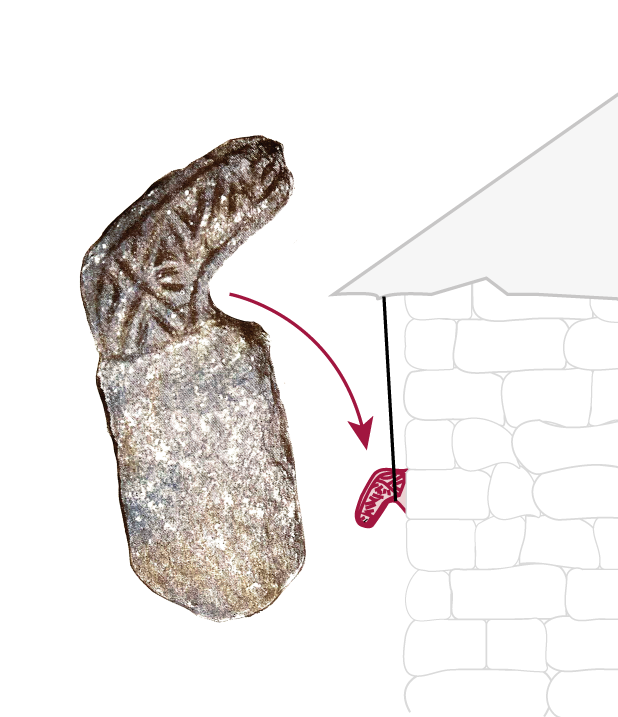
 Building a wall was a colossal job; you had to dig large pits and build parapets of earth and stones; finally, erect walls and crown them with wooden outer walls or stakes. The objective was to provide the village with protection in case of attack, but also with a symbolic element that increased its prestige. The control of the population that lived in the fort could be another of the functions of the wall.
The first wall of Troña, that included the highest enclosure of the fortification, had a perimeter of about 360 m. A wall of the second enclosure, as a consequence of population growth, is about 327 m long and was developed on the north-western slope.
Building a wall was a colossal job; you had to dig large pits and build parapets of earth and stones; finally, erect walls and crown them with wooden outer walls or stakes. The objective was to provide the village with protection in case of attack, but also with a symbolic element that increased its prestige. The control of the population that lived in the fort could be another of the functions of the wall.
The first wall of Troña, that included the highest enclosure of the fortification, had a perimeter of about 360 m. A wall of the second enclosure, as a consequence of population growth, is about 327 m long and was developed on the north-western slope.

In Troña the greatest evidence of the importance of livestock to its economy could be the multiple bollards -some of them decorated with rhombus and V-shaped motifs that were documented here since the late 1920s.

Their abundance and size could be linked to support the livestock of families, which was a fundamental part of the economy of the inhabitants of the fort.
However, some researchers believe that the bollards, which would be placed embedded in the walls of the buildings, could have an architectural function rather than for livestock, that is, linked to the clamping with ropes of the roofs of the huts of the village.